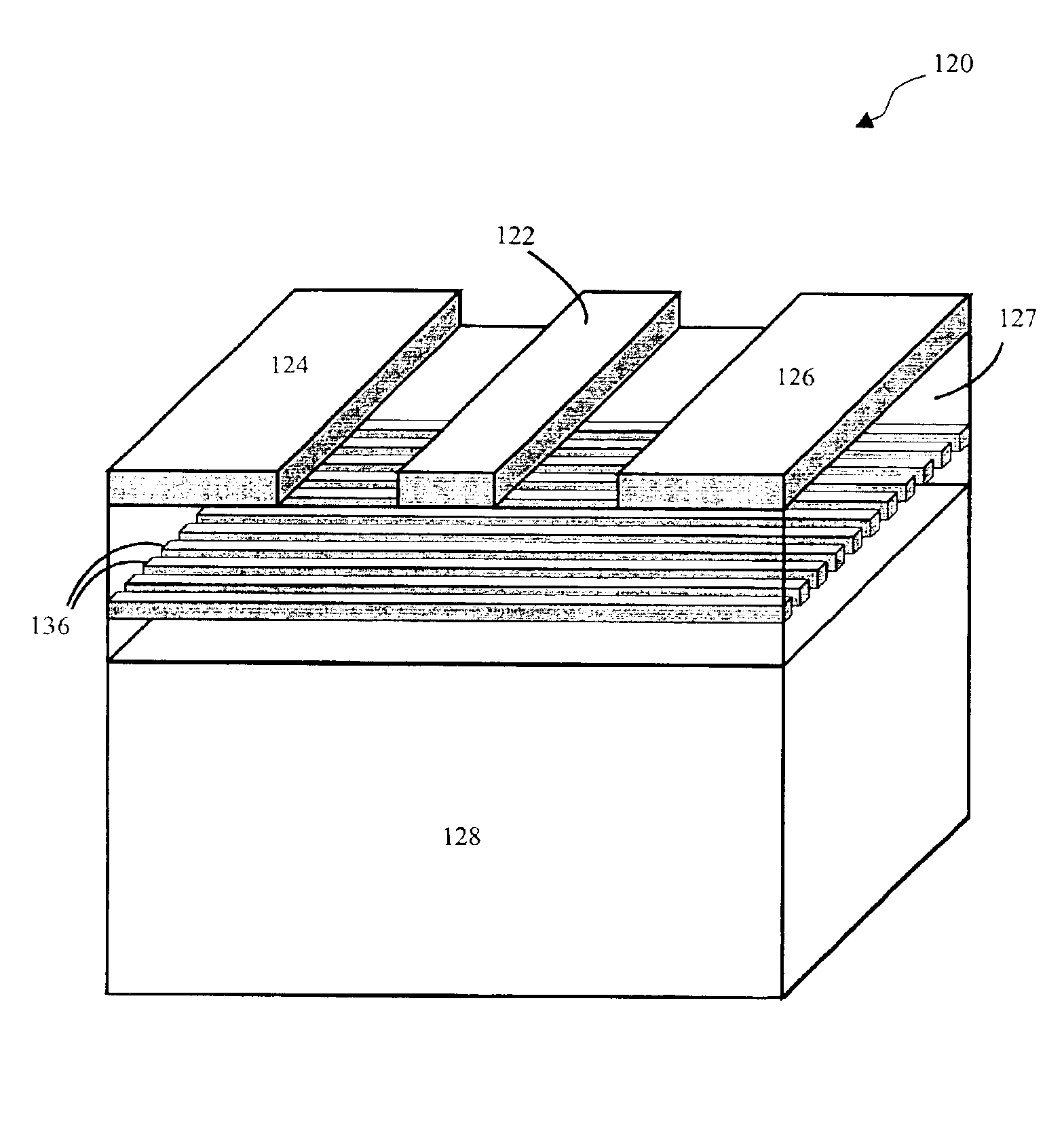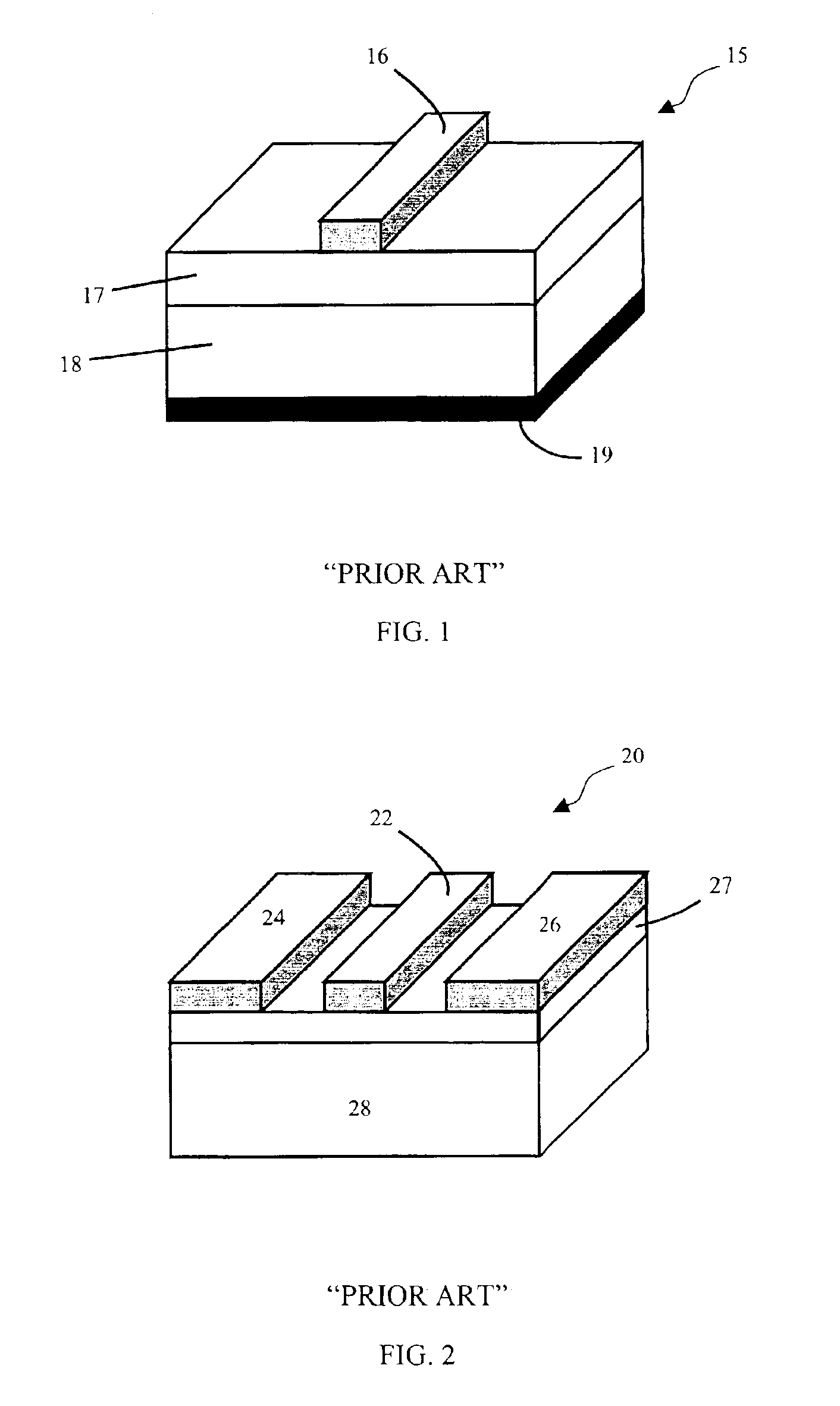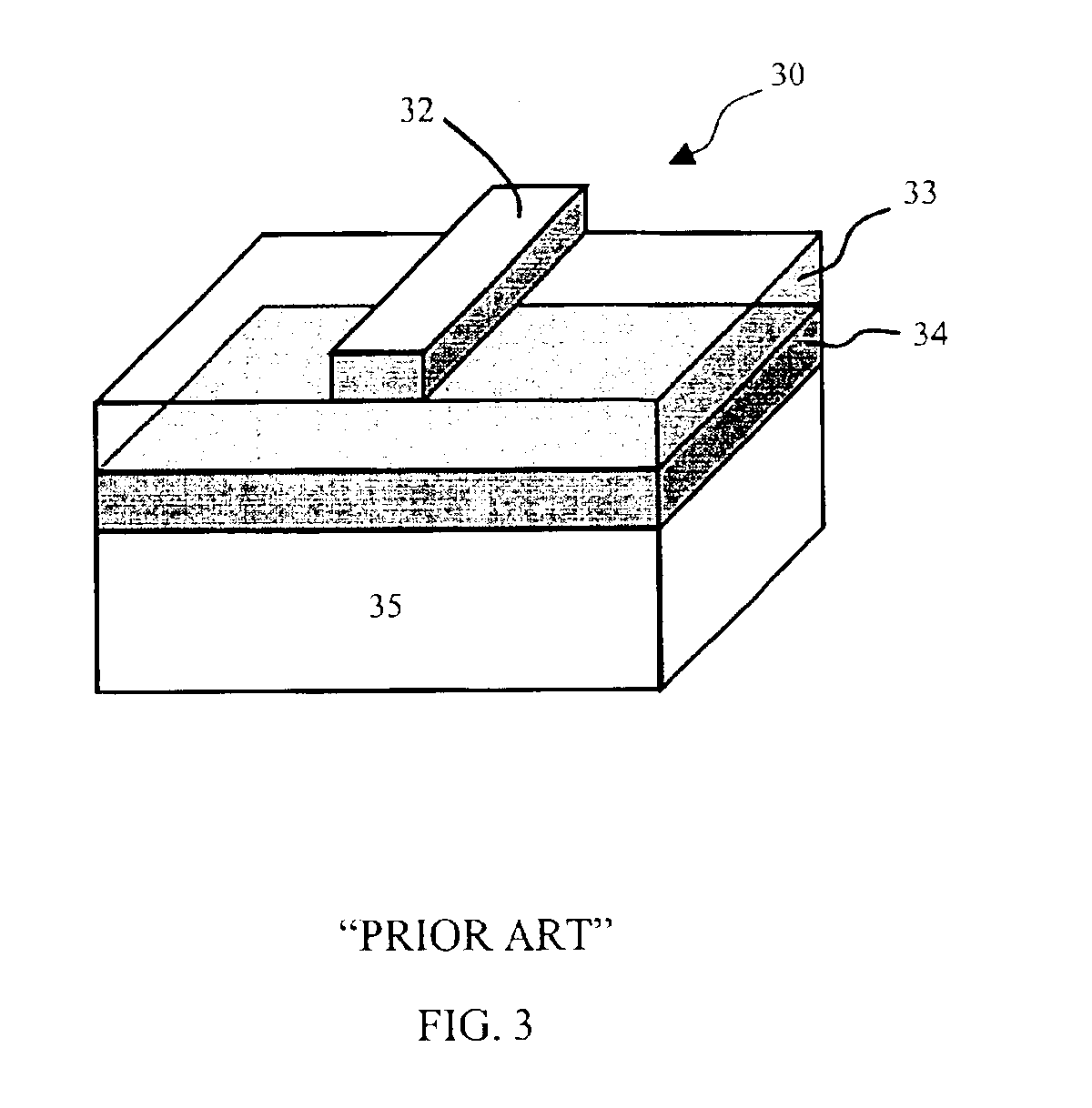Transmission lines and components with wavelength reduction and shielding
a transmission line and wavelength reduction technology, applied in the direction of optics, instruments, light guides, etc., can solve the problems of reducing performance, pulse dispersion and attenuation of the signal being transferred, and limiting the speed and frequency range of the circuit at rf and higher operating frequencies, so as to reduce the chip area of interconnect structures, reduce the loss caused by electric coupling to a substrate, and reduce the effect of energy loss to the substra
- Summary
- Abstract
- Description
- Claims
- Application Information
AI Technical Summary
Benefits of technology
Problems solved by technology
Method used
Image
Examples
second embodiment
[0047]Reference is made to FIG. 9 to describe a transmission line of the present invention. FIG. 9 shows a top view of a portion of a balanced or differential transmission line 220 that includes a pair of coplanar balanced signal conductors 238, 240 and a plurality of metal strips 236 disposed beneath the balanced signal conductors 238, 240. It will be appreciated that the coplanar balanced signal conductors 238, 240 include a positive phase signal conductor 238 and a negative phase signal conductor 240. The metal strips 236 are not connected to either of the signal conductors 238, 240 and inhibit the electric field from radiating to the underlying semiconducting silicon substrate. Again the minimum dimension (or width, as measured in the same direction as current flow in the overlying signal conductors) of the strips 236 is oriented to inhibit current induced via magnetic induction between the top coplanar conductors and the strips. It will now be understood that the signal conduct...
third embodiment
[0048]Reference is now made to FIG. 10 to describe a transmission line of the present invention. FIG. 10 shows top view of a portion of a coupled transmission line 320 that includes a first signal line 342 coupled to a second signal line 344. A plurality of metal strips 336 are disposed beneath the first signal line 342 and a floating shield 346 is disposed beneath the second signal line 344. The plurality of metal strips 336 are not connected to either the first or the second signal lines 342, 344, respectively, and inhibit the electric field from the first signal line 342 from radiating to the semiconducting silicon substrate. Similar to the above-described embodiments, the minimum dimension of the strips 336 is oriented to inhibit current induced between the first signal line 342 and the metal strips 336. It will now be understood that the wavelength of the first signal line 342 is smaller than the wavelength of the second signal line 344. Thus, waves travel at different speeds i...
fourth embodiment
[0049]Reference is made to FIG. 11 to describe the present invention. FIG. 11 shows a top view of a portion of a single ended transmission line 420 that is similar to the first described embodiment and includes three coplanar conductors, a center signal conductor 422 with two adjacent ground strips 424, 426 to form a coplanar waveguide. A plurality of metal strips 436 are disposed beneath the signal conductor and the ground strips. In the present embodiment, however, the metal strips 436 are connected to the ground conductors 424, 426 through electrical vias 448, 450. Thus, in the present embodiment, the metal strips 436 are not “floating strips”, as in the first-described embodiment. This provides a transmission line with reduced wavelength.
PUM
 Login to View More
Login to View More Abstract
Description
Claims
Application Information
 Login to View More
Login to View More - R&D
- Intellectual Property
- Life Sciences
- Materials
- Tech Scout
- Unparalleled Data Quality
- Higher Quality Content
- 60% Fewer Hallucinations
Browse by: Latest US Patents, China's latest patents, Technical Efficacy Thesaurus, Application Domain, Technology Topic, Popular Technical Reports.
© 2025 PatSnap. All rights reserved.Legal|Privacy policy|Modern Slavery Act Transparency Statement|Sitemap|About US| Contact US: help@patsnap.com



